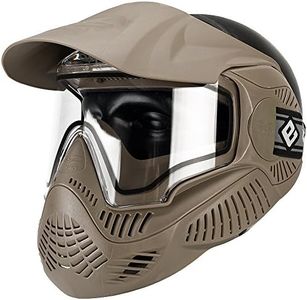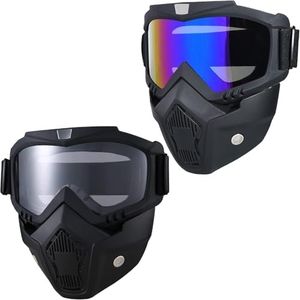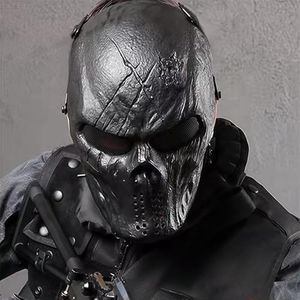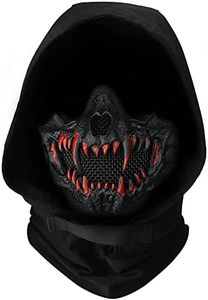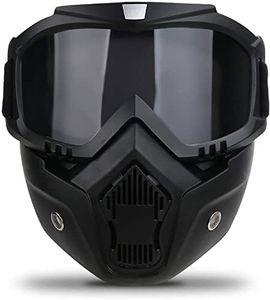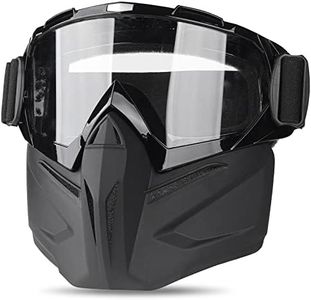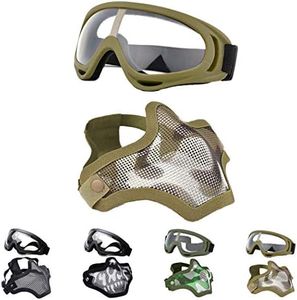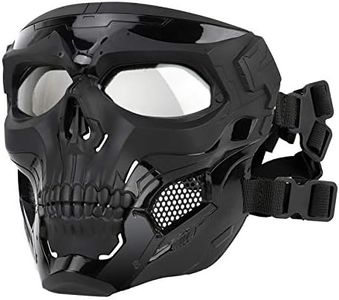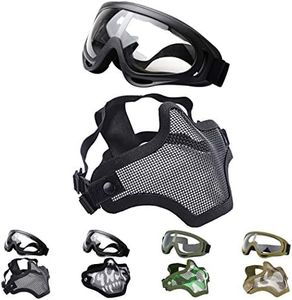We Use CookiesWe use cookies to enhance the security, performance,
functionality and for analytical and promotional activities. By continuing to browse this site you
are agreeing to our privacy policy
10 Best Airsoft Masks
From leading brands and best sellers available on the web.By clicking on a link to a third party's website, log data is shared with that third party.
Buying Guide for the Best Airsoft Masks
Choosing an airsoft mask is all about ensuring your safety, comfort, and enjoyment while playing. Because airsoft involves shooting small plastic pellets at relatively high speeds, protecting your face—especially your eyes, ears, and teeth—is crucial. Comfort and fit matter just as much as safety, since an ill-fitting or poorly ventilated mask can make it hard to focus on your game or even make you want to take it off during play. Understanding the main features and how they impact your experience can help you select a mask that keeps you well-protected without sacrificing comfort.MaterialThe material of an airsoft mask determines its durability, protection level, and comfort. Common materials include hard plastics, mesh, rubber, and foam. Hard plastic offers the best protection against high-velocity shots but can feel heavier and be less breathable. Mesh allows better airflow and is lighter, which can be comfortable in warm conditions, but may lack full protection against very close shots and small fragments. When deciding, think about how intense your games are, how important protection versus breathability is to you, and if you might prefer sacrificing a bit of comfort for security.
CoverageCoverage is about how much of your face and head the mask protects. Some masks just cover the lower face (mouth, cheeks, nose), while others are full-face masks covering your eyes, ears, and sometimes even the top and sides of your head. If you play in close quarters or anticipate a lot of face shots, more coverage is safer. However, full-face masks can feel bulkier or affect your hearing. Consider your play style and the level of protection you’re comfortable with—close-range or fast games usually favor more coverage, while casual, long-range games might allow you to choose less coverage.
Eye ProtectionEye protection is the most critical part of any airsoft mask since eye injuries can be permanent. Some masks come with built-in goggles, while others require separate eye protection. You’ll usually choose from clear, tinted, or mesh eye protection, with clear offering the best visibility day or night, tinted reducing glare in bright outdoor settings, and mesh preventing fog but sometimes reducing visual clarity. Always make sure that the eye protection is ANSI-rated for impact resistance, and pick the type most suitable for your typical playing environment.
VentilationVentilation refers to how well the mask lets air flow in and out, which keeps you cool and helps prevent fogging. Masks with more vents are generally more comfortable during long games and in hot weather, but may be a little noisier and let in more dust or debris. Less ventilation means more protection but can feel hot and suffocating or result in your goggles fogging up. Think about your local climate and how long your typical sessions last—better ventilation is a must if you play intensive or summer games.
Fit and ComfortFit and comfort are essential because a mask that shifts or pinches can distract you or even leave parts of your face uncovered. Features like adjustable straps, foam padding, and ergonomic shaping help create a secure and comfortable fit. Make sure to measure your face and try on masks if possible, especially if you wear glasses or need to fit the mask with other gear like helmets or communication headsets. If you play long games, prioritize masks that let you breathe, talk, and move freely without discomfort.
Fog ResistanceFog resistance is about whether the mask or its goggles tend to fog up during use, which can severely reduce your vision and enjoyment. Look for anti-fog coatings on the lenses, dual-pane lenses, or masks designed with special airflow paths to reduce fog. Some users prefer mesh eye protection to completely avoid fog. If you frequently play in humid or cold environments, or if you run a lot during games, focus on finding a mask with strong fog resistance.
